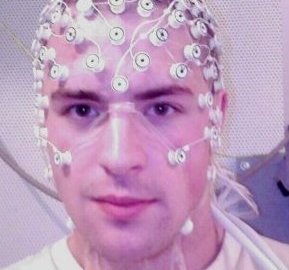Driving a Car With Your Brain

What’s the Latest Development?
A team of German researchers has successfully used a driver’s brain signals to apply the brakes of a car. Using a driving simulator, the researchers attached electrodes to the scalp and lower right leg of the driver and then used both electroencephalography (EEG) and electromyography (EMG) respectively to detect the intent to brake. “These electrical signals were seen 130 milliseconds before drivers actually hit the brakes—enough time to reduce the braking distance by nearly four meters.”
What’s the Big Idea?
Implementing this neurological research in the real world would prove a challenge. Subjects in the study, for example, were strictly limited by laboratory conditions. Drivers placed in the simulator were asked not to move while attached to the electrode wires. In the real world, of course, drivers are free to move as they wish. In addition, marketing any technology of this kind would depend on whether drivers would feel comfortable handing over any braking responsibility to a computer hooked up to their head.




